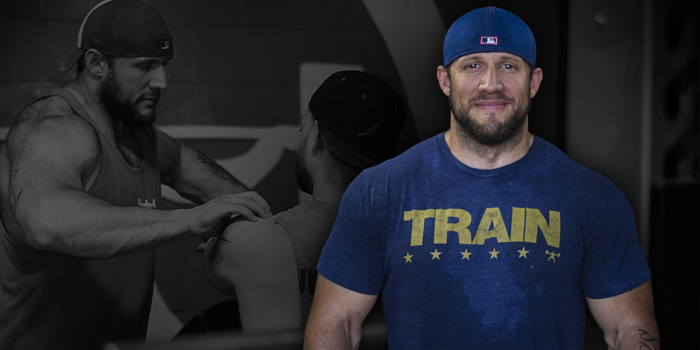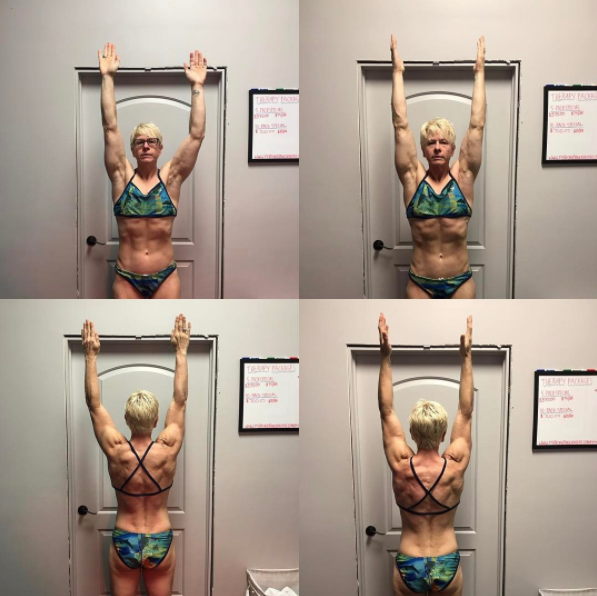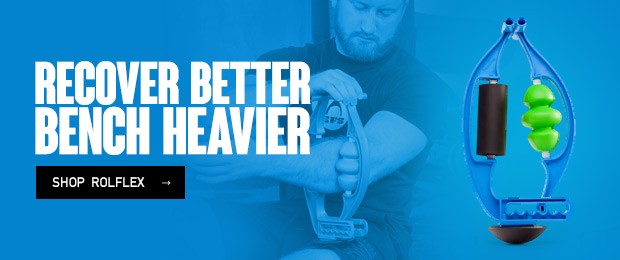
Every day, multiple aspects of your life are being influenced positively and negatively. You may be aware of these influences and choose to ignore them, or these influences may weed their way into your subconscious and alter your decision-making process without you realizing it. People, ideas, personalities, social media, dogmas — these are just a few potential influences in life.
Today’s injury rehabilitation and pre-habilitation field is heavily influenced. People that shall remain nameless, ideas and gadgets that are biased and sold simply for financial gain, and totals and trophies have all somehow now become influential in how people view and search for injury rehabilitation and pre-habilitation advice. The sad thing is that there is nobody to blame but ourselves. The days of researching, reading, questioning, and having a mind for one's self are long gone.
RECENT: The One Thing Your Glutes Are Missing
Do you let current trends and fads dictate your choices on how and to whom you go for expertise? Are you being influenced by fancy social media posts and movement and rehab “gurus” that really hold no weight but throw a bunch of jargon at you? Are you letting someone’s total or trophy case determine what route is best for your rehab?
I’ve heard it a million times: “I’ve been doing x, y, and z for my rehab because I saw so-and-so do it on social media and everybody at the gym is doing it.” Now, I’ve seen a lot of dumb shit on social media, so it begs the question, where do people stop? How do people begin to decipher what constitutes good injury rehabilitation or pre-habilitation? In this article, I’m going to describe in detail many different factors that will help you sniff out the bullshit!
The Assessment
To me, the assessment process is what separates the good from the bad. Red flag: if your therapist, coach, trainer, movement guru, etc. starts treating you without doing some sort of assessment, pack your shit, get a refund, and leave.
The assessment process is, in my opinion, the most important part. The majority of the time, in the beginning, should be spent assessing the individual. This is most important because it sets a baseline. A baseline is needed so one can assess what treatment will be most effective and thus gather the correct outcome measures to track progress. Otherwise, you’re simply throwing the same damn thing at the problem without any actual data to interpret. (Note: An outcome measure is simply the result of a test that is used to objectively determine the baseline function of an individual at the beginning of treatment.) Once treatment starts, and hopefully is continuous, the same treatment or instrument can be used to determine progress and treatment effectiveness. This seems to be one of the biggest issues with individuals who lack a true education and understanding of the foundational scientific principles that are needed to be effective. If you only have one tool in your shed and you really have no idea if this tool is working, why are you continuing to use it?
The assessment is also necessary for establishing a proper diagnosis leading to proper treatment. A lot of individuals lack the knowledge, education, and ability to really give an accurate diagnosis. Forgive me if this sounds simple, but if you don’t know what you’re dealing with, how can you provide the correct treatment? This is where the “bro treatments” come in.
You know them: "My buddy told me to do this" or "I saw this strong powerlifter/bodybuilder do this, so it must be good." The problem with these types of “fixes” is they usually start off way too aggressive and do more harm than good. Good therapy should be systematically scaled and progressed so tissues, joints, etc. can adapt and recover. This leads us into our next topic...
Treatment
The treatment is only effective if the assessment and diagnosis are accurate. A few things to look for to save some time and energy:
Self-Taught/Self-Educated: This is the individual who watched one too many YouTube videos or learned from a guy who taught himself. What this really means is, “I have no formal education or experience. I haven’t had months or years of interaction with people who have had similar or different conditions."
Contraindications: A fancy word for saying things that might be hiding that will mess you up. These are learned. There’s no way of getting around this. You either know them or you don’t, and if you don’t know them and start treating an individual, you will seriously screw them up.
Personalized vs. Generalized: This is where treatment becomes specific to an individual. How will you know if it is? Well, simple: ask questions! Don’t be afraid to ask questions about your treatment and know that it is specific to your needs. Here is a good start:
- How is this treatment specific to me?
- How is my treatment plan different than others?
- Do you do this with all your patients/clients?
Your Wants vs. Therapist Wants: This is a delicate ladder to step on. Therapy outcomes are best when patients/clients can buy-in. This is done by the therapist acknowledging what you want versus what is best for treatment. It’s the same for coaches, trainers, therapists, etc. If your therapist doesn’t take this into account, there’s an issue.
What's Needed vs. What's Available: “Everything can be solved by x, y, and z.” What this person is really saying is, “I have no other available treatment options so I’m going to use the only tool I have, which might not do a damn thing.” A good therapist will be educated and well-versed so that the correct treatment is always available.
Meat and Potatoes
Long-term results on ranges of motion, tissue resiliency, strength, stability, etc., can only be established through progressive and scaled loaded movement. This should be the so-called “meat and potatoes” to any injury rehabilitation or pre-habilitation program. Exercises that are prescribed should have scaled intensities, meaning the intensity goes up and down based on patient feedback, and the correct stimuli should be introduced at the appropriate time in the healing process. Do not hesitate to question what or why your therapist is using certain tools, treatments, etc. He or she should have an answer to each question.
MORE: Back to Recovery Basics: Fundamentals of Recovery
If you feel the above is not the foundation of your treatment plan and you’re constantly just getting “treatment,” find something or someone else.
The goal of any rehab program and of any therapist is injury prevention, not injury treatment. Our job isn’t to solely treat. Our job is to educate and prevent. If this aspect is missing, it’s another telltale sign your “guru” is full of shit. Make sure you are learning why an issue occurred. How did this happen? It does not have to be to the degree of the person doing the treatment, but a better understanding of what the issue is will help you in more ways than you can imagine.
Social Media
To be honest, I hate social media. If it weren’t for the fact that it’s one of the biggest and cheapest ways to market yourself, your services, and your business, I’d probably ditch it. That’s just the thing, though. Social media has saturated and convoluted almost every aspect of the fitness industry. In the injury rehabilitation and pre-habilitation field, it’s all about fads, gadgets, and what new “system” will fix me the quickest. This has left the door open for people who are financially-driven to prey on those who may be less educated. It has created self-dogmas to the point where people believe their way or their tool is the only way. I’ve had many discussions with people in and out of this field and they all have a similar thought: just because you learn something doesn’t mean you’re educated in it. So, here are some things to stay away from:
- If someone spends too much time posting intricate charts and models of super advanced exercises, stay away. If they are a good therapist they should be busy treating or training.
- When a therapist feels they must bash other therapists or other therapies to prove that they are “superior,” stay away.
- If you find a therapist doing more taking than giving, stay away.
- If a therapist is worried about getting you to like their status, double-click to love, or any of that shit, stay away.
We are therapists for a reason. We love to help others. It’s our passion. Some of us have taken a wrong turn and have strayed away from our true calling of helping and giving to others more than you give to yourself. This article wasn’t about bashing any one modality, gadget, person, or system. Hopefully, you read it as an article that informed you on how to get the best treatment, pun intended, you deserve. This is my passion; this is what I love to do. I won’t see it be polluted to the point of being unrecognizable.
Please watch the video below.
This is a glimpse of what goes on during treatment. This was not a complete and in-depth session, as we were pressed for time. However, by reading the above article you can see how it falls in line with the video.












